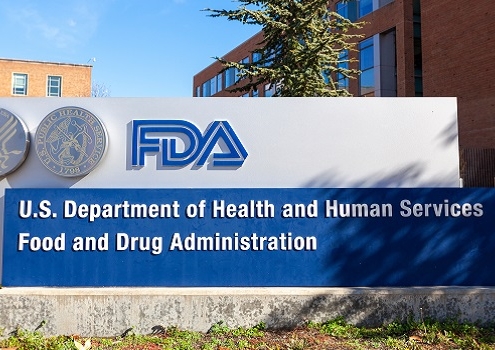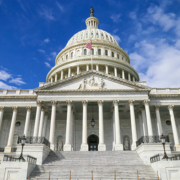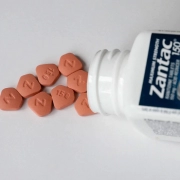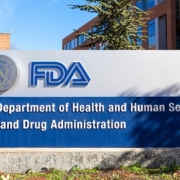FDA action alert: Merck, Ardelyx, BioMarin, and more
FDA action alert: Merck, Ardelyx, BioMarin, and more
Published: Oct 16, 2023
By Tristan Manalac
BioSpace
The FDA’s schedule is picking up speed, with six target action dates over the next two weeks, including one for a blockbuster cancer treatment and another for a highly anticipated therapy for a rare pediatric disorder.
Merck Looks to Add Perioperative NSCLC to Keytruda’s Label
The FDA has until October 16 to decide whether or not to approve Merck’s Keytruda (pembrolizumab) for the treatment of resectable stage II, IIIA or IIIB non-small cell lung cancer (NSCLC) before and after surgery.
Merck is backing its supplemental Biologics License Application (sBLA) with interim results from the Phase III KEYNOTE-671 study, which last week showed that Keytruda significantly improved overall survival (OS), one of its two primary endpoints, in this patient population.
Though details were sparse, these findings make Keytruda the first anti-PD-1 therapy to demonstrate significant OS benefit as a neoadjuvant and adjuvant treatment versus pre-operative chemotherapy in NSCLC, the company said in its announcement.
At the American Society of Clinical Oncology (ASCO) annual meeting in June, Merck revealed data from KEYNOTE-671 showing that Keytruda aced a second primary endpoint of event-free survival. Patients treated with the blockbuster therapy saw a 42% drop in the risk of recurrence, progression or death.
Keytruda is already approved for the treatment of NSCLC, though its current label only authorizes its use in metastatic or unresectable stage III disease and as an adjuvant treatment after resection and platinum-based chemotherapy.
Ardelyx Tries Again with CKD Drug
After an initial rejection in 2021, Ardelyx is trying again for approval of tenapanor to control serum phosphate levels in adults with chronic kidney disease (CKD) on dialysis who have shown either poor response or intolerance to phosphate binder therapy. The FDA’s target action date is October 17.
Ardelyx resubmitted its New Drug Application (NDA) in April 2023, providing data from a large development program with more than 1,200 patients enrolled across three Phase III trials: PHREEDOM, BLOCK and AMPLIFY. All studies met their primary and key secondary endpoints, pointing to the efficacy and safety of tenapanor for this indication. The company also included data from two Phase IV open-label studies: OPTIMIZE and NORMALIZE.
In the FDA’s rejection letter in October 2021, the regulator said that while Ardelyx had provided “substantial evidence” of tenapanor’s effects on serum phosphorous levels, the candidate’s overall efficacy was “small and of unclear clinical significance.”
More than a year later, in November 2022, tenapanor faced the FDA’s Cardiovascular and Renal Drugs Advisory Committee, which voted 9–4 that the benefits of Ardelyx’s candidate outweighed its risks.
Bausch Awaits Regulatory Ruling on Acne Gel
By October 20, the FDA is expected to release its decision on Bausch Health’s NDA proposing its investigational gel IDP-126 (clindamycin 1.2%/adapalene 0.15%/benzoyl peroxide 3.1%) for the treatment of acne vulgaris.
Affecting some 50 million Americans, acne is the most common skin problem in the U.S. and can often leave scars on the skin and cause emotional distress. Typically, physicians prescribe a combination of treatments to address the many different underlying factors contributing to the development of acne.
Bausch takes a similar approach with IDP-126, which combines the retinol adapalene, the anti-microbial benzoyl peroxide, and the topical antibiotic clindamycin. All three agents, alone or in various combinations, have shown promising dermatologic activity.
To back its regulatory application, Bausch presented data from two Phase III randomized and placebo-controlled trials, with over 360 patients enrolled. Results from both studies showed that IDP-126 could significantly reduce inflammatory and non-inflammatory lesions and achieve significantly greater treatment success.
Bausch is developing IDP-126 through its dermatology unit Ortho Dermatologics.
BioMarin Proposes Voxzogo for Younger Children
One of the fall’s most highly anticipated FDA decisions involves BioMarin’s Voxzogo (vosoritide), which was initially approved in November 2021 for the treatment of achondroplasia in children aged five years and above.
On or before October 21, the FDA will decide whether or not to approve Voxzogo to treat children under the age of five with achondroplasia—a rare genetic disorder that causes the most common form of dwarfism.
Designed as a once-daily injection, Voxzogo is a C-type natriuretic peptide analog that works by positively regulating the signaling cascade downstream of the FGFR3 protein. In achondroplasia, FGFR3 is mutated, and Voxzogo’s mechanism of action helps override this dysfunction to promote endochondral bone growth.
BioMarin supported its supplemental NDA, which the FDA accepted in March, with data from a Phase II randomized, double-blinded and placebo-controlled study. Results showed that the safety and efficacy profiles of Voxzogo were similar between children older and younger than five years of age.
The European Medicines Agency is also reviewing Voxzogo in this younger patient population and if approved in both markets, the label expansion could make the treatment available as early as birth for over 1,000 more patients.
Regeneron, Sanofi Seek Additional Indication for Dupixent
By October 22, the FDA is due to release its decision on Sanofi and Regeneron’s sBLA proposing their blockbuster Dupixent (dupilumab) as a treatment for chronic spontaneous urticaria (CSU) in adults and in adolescents 12 years and above.
Dupixent, a fully human monoclonal antibody that blocks the IL-4 and IL-13 signaling pathways, is approved for a variety of indications, including atopic dermatitis, asthma, eosinophilic esophagitis, prurigo nodularis and chronic rhinosinusitis with nasal polyposis. This would be Dupixent’s first approval in CSU.
Data from two Phase III studies in the LIBERTY-CUPID development program—A and B—formed the evidence base supporting Sanofi’s and Regeneron’s sBLA. Results of Study A, posted in July 2021, showed that Dupixent aced its primary and key secondary endpoints, with treatment leading to a significant drop in itch and hives, as compared with standard-of-care antihistamine medication, in biologic-naïve patients.
In contrast, an interim analysis of Study B showed that Dupixent treatment did not significantly improve these symptoms in CSU patients refractory to omalizumab treatment.
Next Week: Santhera, Catalyst Await DMD Verdict for Vamorolone
Joining BioMarin’s Voxzogo among the year’s most highly anticipated rare disease decisions is Santhera’s investigational anti-inflammatory drug vamorolone, which the company is proposing as a treatment for Duchenne muscular dystrophy (DMD). The FDA’s verdict is due on or before October 26.
One of the most frequently documented rare diseases, DMD is caused by mutations in the dystrophin gene and often manifests as progressive muscle weakness and degeneration. In its most severe forms, DMD can also afflict the heart and respiratory muscles, typically leading to the failure of these organ systems.
A common treatment regimen for DMD involves the use of glucocorticoids, which have been shown to slow muscle weakness and prolong life expectancy. However, this approach bears substantial side effects. Vamrolone, a dissociative anti-inflammatory drug candidate, acts on the same receptor as glucocorticoids but elicits different downstream activity. According to Santhera, this mechanism has the potential to “dissociate” efficacy from typical steroid safety concerns.
In June 2023, Catalyst Pharmaceuticals bet up to $231 million in upfront and milestone payments, plus royalties, to gain exclusive North American license to vamrolone.
Source: BioSpace






 Reuters
Reuters


